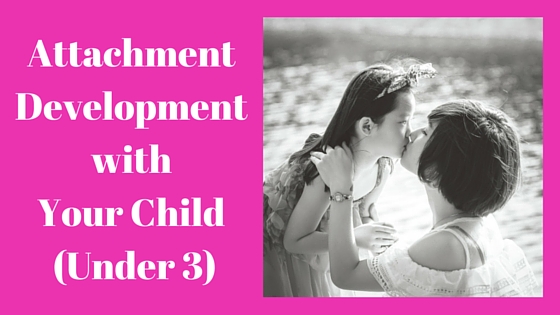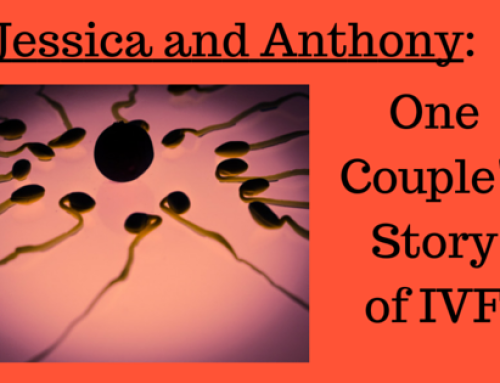Your little one needs you.
Your young child is listening to you, looking at you, communicating with you in significant ways.
You want him to know he is seen, heard, and safe. You want your child to be securely attached to you.
During the infancy and toddler period, and up to the age of 3, your child’s foundational level of attachment development informs (1) how well he or she connects with people, (2) the degree to which he or she is willing to explore the world a safe distance from you, and (3) his or her own physical, emotional, and cognitive sensibilities.
Attachment development is created through more than proximity or exhaustive amounts of attention paid to your child. Attachment development is a parenting process, customized to your individual child, that is vital for emotional connectedness and a sense of safety in the world.
Here are some key ways to help encourage attachment.
1. Keep caregiving consistent. Your little one needs a steady source of love and attention. Attachment development occurs with the most consistent caregivers. Parent, grandparent, adoptive parent, whoever you choose, should be able to provide loving, responsible care and affection. When your child wants to feel secure, he or she should see the same few caregivers’ faces and hear the same few, comforting voices.
2. Allow your young child to explore the world. Let your child know that the world, under your supervision, is a relatively safe place. Protect your child when needed, but allow him or her to gain a sense of the world without you hovering overhead at all times. Don’t keep your child from getting messy, or incurring a few small bumps and bruises. Be in sight and available for when your child needs to touch base with you.
3. There is security in routine. Infants, toddlers, and young children usually require consistent, predictable eating, sleeping, and play regimens. This is the way that safety is established. Initially, infants need routines that respond to their natural rhythms, but over time, you can adjust to routines that fit better with the whole family. This helps your baby feel integrated, and safely part of a responsive family system. Toddlers and young children need the same predictability, along with increasing space to explore. Your caregiving will be inexorably linked to your child’s sense that his or her physical and emotional needs will be met in a sensitive, timely way.
4. Show your love obviously and often. Make displays of affection, and verbal expressions of love for your child, frequent and commonplace for attachment development to blossom. Research regarding orphans and neglected children have highlighted the crucial nature of a child’s need for gentle eye contact, soothing sounds, and comforting skin-to-skin touches. Without them, children have significant difficulty thriving or even focusing well on much else. Nothing replaces your unique brand of care, don’t be afraid to share it freely. These lay a critical foundation for the way your child will express love in the world as well.
5. Be reliable: respond, rather than react. Maintain steady, calm, and consistent responses to your child’s distress. The best care is attentive and competent, not clingy or aloof. Attachment development isn’t a result of wearing yourself out over every move your child makes or withholding love. Take the time to imagine what it feels like to be your child in that moment. Be there for your child, recognize his or her needs, and respond to your child’s unique cues. If you find yourself becoming upset by your child’s distress (it happens sometimes, to all parents), give yourself a break. Take some time to collect yourself so that you can respond calmly to your child.
6. Apologize. For those times when you react instead of responding – sincerely apologize. Children are remarkably astute, and incredibly forgiving. One of the biggest gifts we can give our children is the modeling of how to right a wrong. They know that parents and caregivers are not perfect. They also need to see that when they themselves are not perfect, they can take ownership, apologize, and be forgiven.
7. Learn what your child is trying to tell you. Attachment development results from your appropriate responses:
- Watch your child. Learn what your child’s facial expressions and body language tell you.
- Listen to your child. Try to grasp the meaning of your child’s cries, particular expressions, and tone of voice.
- Be affectionate towards your child. Be sensitive to the type of touch and pressure your child enjoys most.
- Comfort your child. Pay attention to movements and environments that soothe him or her best.
8. Try to see your relationship with your child as reciprocal and flexible, rather than focused on your own concerns or ideas of being a “perfect parent.” Do your best to notice what is happening with your child as it’s happening. Be careful not to look past your child’s real-time needs in order to force personal or parenting ideals.
Attachment development isn’t about responding perfectly every time. It often means recognizing disconnect and remedying the problem effectively.
Attachment development is not dependent on constant togetherness or a single parenting method.
You’re privileged with influencing the foundational first bond your child will base so much of his or her future upon, one loving brick at a time. It’s a big deal. But you’re up to it.
With the previous strategies in mind, developing a secure attachment with your child can be one of your greatest joys.
For more information on Counseling for Parenting Young Children click here.







Leave A Comment